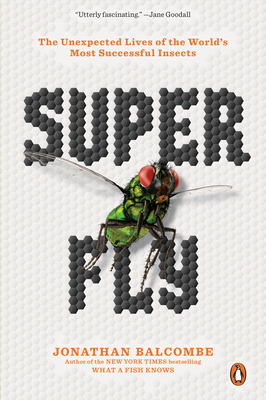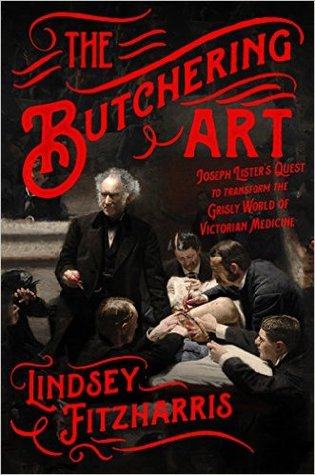If you were to find yourself with a nonhealing wound and had some dead tissue that needed excising, would you entrust yourself to the care of maggots or to a knife*? Personally, the maggots sound pretty tempting. Between reading about the gruesome history of surgery (see below) and then about the positive outcomes for folks with wounds infested with a serendipitous pile of wriggling maggots (especially in the earlier days when the risk of infection made surgery very much a last choice – though Maggot Debridement Therapy is making a comeback for various reasons), I’d wager you might give more consideration to the humble maggot!
And here’s a glowing review of the maggot by surgeon William S. Baer, during World War I, as he treated a soldier who had been left quite injured for several days on a battlefield – not the most sanitary of conditions – with “compound fractures of the femur and large flesh wounds of the abdomen and scrotum” (Balcombe, 254). At the time, compound fractures of the femur were just short of a death sentence: 75-80% died. By the time this soldier was found, having had no food or water during that entire time and in spite of his injuries, fever-free, Baer remarked:
“there was practically no bare bone to be seen and the internal structure of the wounded bone as well as the surrounding parts was entirely covered with the most beautiful pink tissue one could imagine.”
qtd. in Super Fly, Balcombe, 254
And to what could this “most beautiful pink tissue one could imagine” be credited? Maggots. Yes, before he could see all that lovely healthy healing tissue, Baer had had to remove thousands upon thousands of maggots from the wounds. Honestly, I adore this quote about “the most beautiful pink tissue”, because the evident awe and appreciation present in this quote – as applied to the tissue, sure, but surely also somewhat sideways in praise of the maggots – gets me every time. That’s a 5-star (⭐⭐⭐⭐⭐) review right there, and I would humbly suggest it gets pinned as Most Helpful wherever people go to read about maggot debridement therapy.
*Under a licensed medical professional with surgical experience, of course. Not just any ol’ knife. And if a knife isn’t what you need, then whatever is the conventional medical intervention that is not maggots.
As for why maggots might still be relevant, given we now have access to antibiotics, we’ve got rising rates of “chronic conditions, diabetic ulcers, and hospital superbugs” (Renault, A Truly Revolting Treatment is Having a Renaissance, The Atlantic), thanks to antibiotic use (…overuse) and our lifestyles (though some of the population have less choice in participating in lifestyles with negative health outcomes), not to mention the fact that in some cases, maggots actually outperform conventional intervention, since they’re only interested in dead tissue, so they know when to stop, whereas the knife knows no such distinction and cuts away some healthy tissue in the process: “a 2012 study from the Archives of Dermatology showed that maggots cleared more dead tissue from surgical incisions than did surgical debridement” (Balcombe, 255). In addition to this, despite the disgust that might accompany thoughts of maggots, what with the association between them and filth/decay, they actually do more than just remove dead tissue, secreting an antiseptic compound that helps “promote new cell growth. Greenbottle fly maggots also release ammonia… and thus the horrible odor of decaying flesh can be suppressed by their presence” (Balcombe 256). Super flies indeed!
Anyone who’s stuck around this long into the post but would rather never hear me speak of maggots ever again will surely be interested in reading about the other incredible aspects of flies that make them so much more than some of the annoying pests we often think of them as. Check out Super Fly by Jonathan Balcombe to learn about the incredible variety that makes up the order of Diptera, how their interactions with people have affected the course of history, and how we’d be in pretty deep sh*t without them (quite literally).
Now, this is a bit of a digression, but hear me out: check out The Butchering Art by Lindsey Fitzharris. I’m pretty sure this is where I first read that “most beautiful pink tissue” line (that quote hits me in the feels every time, which probably explains why I seem to love maggots so, if the previous 600 words or so are anything to go by), and for all that we grimace at saprophagous creatures, I can’t help but feel like the history of surgery – it’s been referred to in times gone past as the butchering art, for crying out loud – is kind of more disturbing than anything** nature throws at us. If you’ve ever been in surgery or benefited in any way from sterilization procedures, you’ve probably got Joseph Lister to thank, and The Butchering Art is basically an ode to Lister as it follows his life and details the contributions he made all through his life to the art of surgery, making surgery less of toss up whether you’ll die from what ails you or the surgery itself, and more something that will actually give you more of a fighting chance.
**I’ll probably regret saying “anything” because nature encompasses a cornucopia of creatures, among which likely many I would probably rather never see or about which habits I would rather never be made aware of. Feel free to comment in and tell me all about the horrors nature has to offer.
Now, back to bugs, which, as you know, I love (though not really in practice – I will just as quickly get away from an insect or arachnid as the next person). While I’m entirely of the opinion that we should probably appreciate and learn to respect insects as themselves, not merely for what they can do for us, I understand their usefulness makes it easier for us to appreciate them. If this sounds a lot like a very simplified account of what Kant says about treating rational beings, I’m all for it, because after reading Super Fly, you might be hard pressed to think of insects as unthinking automatons. (I’m not saying let’s stop appreciating insect output that is of use to us, mind you, so much as saying we should not appreciate them merely for that fact.) If you’re interested to learn more about bugs, check out my previous post and these titles:
- Buzz, Sting, Bite: Why We Need Insects by Anne Sverdrup-Thygeson (2019) will be an eye-opener as to just how much of our lives relies on insects, from the chocolate we enjoy to the pollination of food crops, their contribution to the sciences, and their place in the world as food for larger organisms.
- The Butterfly Effect: Insects and the Making of the Modern World by Edward D. Melillo (2020) goes more in depth than Buzz, Sting, Bite, and covers how cochineal (red dye), silkworms (silk), and lac insects (whence shellac) have influenced human history
- Fireflies, Honey and Silk by Gilbert Waldbauer (2009)


I have to say, you had me thinking and reading about flies and bugs far more than I ever wanted to – I had to force myself past my gag reflex so to speak, but as I read on I was grateful to learn! On a similar topic, did your reading cover the previous theory about spontaneous life generation and how scientists thought that maggots just arose from dead meat? 400 years ago, it took a scientist placing a piece of meat in a closed jar and comparing it to an open jar to realize that flies did not form on the meat in the closed jar – proving they don’t just generate out of thin air. What a win for the scientific theory!
Hahaha yes! The discovery that maggots didn’t just spontaneously generate off dead meat was quite a turning point for science! I almost can’t believe that was the going theory up till so recently (well, several centuries ago, but that theory had a good long life!), though I’m sure that had I been born back in the day without the scientific discoveries that have already been made when I was actually born, I’d most likely just have believed that too.
I’m happy to hear that forging on to continue reading my ode to maggots and flies was worth it, and that you learned something from it!